

Cold War: 1971-1990
The major unit at Fort Campbell was the 101st Airborne Division. However, the 20th Engineer Battalion was a non-divisional unit assigned directly to U.S. Army Forces Command. For most of its time at Fort Campbell, the 20th Engineers were attached to the Eagle Support Brigade, later re-named the 101st Corps Support Group. The 20th Engineers wore either the patch of the 101st Airborne Division or the patch of Continental Army Command (later known as Forces Command), depending on the wishes of the 101st Airborne's commanding general at the time.
Throughout 1971 the 51st Engineers, then the 20th Engineers, conducted normal training and construction operations at Fort Campbell. The companies executed various post projects, conducted NBCAIC (Nuclear, Biological, Chemical Accident/Incident Control) alerts, executed building improvements, conducted 24-hour alerts, and went on short field training exercises. Each of the companies reported severe manpower shortages in their October histories. In a relief attempt, soldiers from the 173rd Airborne Brigade who refused jump status were reassigned to the 20th. Though this was a temporary fix in numbers, these soldiers were not up to the Engineer standard and many were AWOL within just a few months.
Also in 1972, the Battalion participated in Operation Flamingo at Homestead Air Force Base, Florida. The operation involved loading 88 aircraft with soldiers, vehicles, and equipment as a deployment readiness exercise. The Battalion was still critically short soldiers and reported only a 35% fill of mechanics in October 1972. That same month the 114th Engineer Detachment (Fire Truck) and the 26th Engineer Detachment (Water Purification) were attached to the 20th Engineer Battalion. Construction projects in Flatwoods, Tennessee, Clarksville, Tennessee, and Eddyville, Kentucky were completed as part of a Civic Action Program.
On 29 May 1973, the 20th Engineer Battalion was the first non-divisional unit at Fort Campbell to receive the coveted Commanding General's Outstanding Unit Award.
The battalion completed the Indian Mound Airfield for Fort Campbell in 1973. Company B and elements of the 326th Engineer Battalion reshaped and recrowned the runway and conducted rock crushing operations in preparation for Operation Brave Shield VII. The project also supported Operation Orbiting Eagle II in mid-November 1973.
Civic Action Projects were at the forefront of 20th Engineer Battalion missions throughout 1973 and 1974. The following projects were completed:
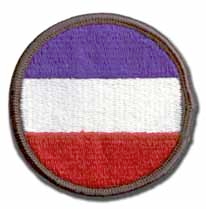
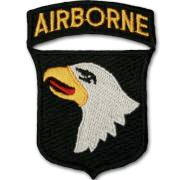 On 20 August 1971, the 20th Engineers cased its colors in the Republic of Vietnam and moved to Fort Campbell, Kentucky, where it took the place of the recently deactivated 51st Engineer Battalion. Very few soldiers actually moved to Fort Campbell; most soldiers were re-distributed to other units in Vietnam, and the unit in place at Fort Campbell basically replaced the colors of the 51st Engineers with the colors of the 20th Engineers.
On 20 August 1971, the 20th Engineers cased its colors in the Republic of Vietnam and moved to Fort Campbell, Kentucky, where it took the place of the recently deactivated 51st Engineer Battalion. Very few soldiers actually moved to Fort Campbell; most soldiers were re-distributed to other units in Vietnam, and the unit in place at Fort Campbell basically replaced the colors of the 51st Engineers with the colors of the 20th Engineers.

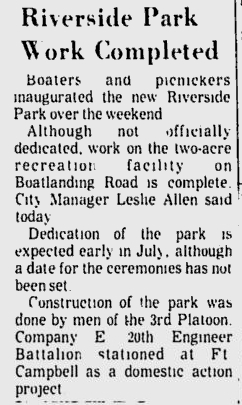
In 1972, the 20th Engineers completed construction projects on Fort Campbell including ranges, heliports, ammunition supply points, tank trails, and stockade building rehabilitation. Company D also worked on a civic action project in the Bowling Green, Kentucky community. The company constructed a recreation park, cleared debris, constructed a foot bridge, installed culverts and constructed picnic tables. HHC provided construction expertise to the Hopkinsville, Kentucky Senior Citizen's Center by constructing a wood-working shop, roof renovations, and wiring and hanging florescent lights.
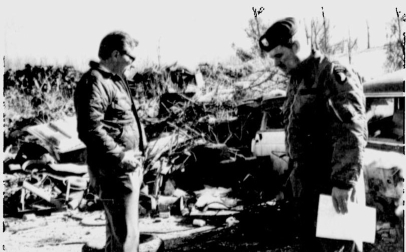
Cadiz, Kentucky, Mayor W. J. Hopson discusses a civic action project with
Captain Boyd Ashcraft, commander of Company B, 20th Engineers.
Click the photo for more about the project.


The 20th Engineer's major mission in the Cold War era was to deploy and fight in Germany if called to do so. It executed various exercises to be prepared for this mission. In 1976 the battalion, with help from a Transportation battalion at Fort Campbell, rail-loaded the entire 101st Airborne Division in a deployment to Germany. Then, in August throuth October in 1977, the 20th Engineers deployed to Germany for a REFORGER (Return of Forces to Germany) exercise in which it was attached to the 1st Infantry Division.
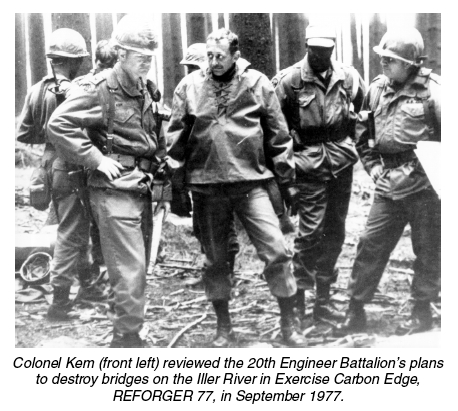
The 20th Engineers did not take their equipment to Germany. Instead, the battalion had a full set of equipment pre-positioned in Germany to allow rapid movement and then deployment to its designated battle positions.
In addition to training for combat operations, the 20th Engineers continued civic action projects in the community. In July, 1977, the battalion constructed a headquarters and dining facility at Camp Wildcat Hollow, near Russellville, Kentucky. Otto Korum Lodge was turned over to the Audubon Council of the Boy Scouts of America.
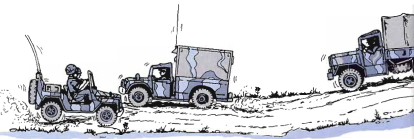
Click the image above for a humorous article about convoys from the Fall 1978 edition
of The Army Communicator, written by the former Signal Officer of the 20th Engineers
In April, 1979, elements of the 20th Engineer Battalion deployed to Fort Amador, Panama Canal Zone, to participate in Joint Training Exercise "Black Fury II." The deployment was one of a series of exercises to rehearse the defense of the Panama Canal.
The 20th Engineers again deployed to Germany for a REFORGER exercise in 1982 under the command of Lt. Col. John W. "Jay" Braden, Jr., battalion commander from 1981 to 1984.
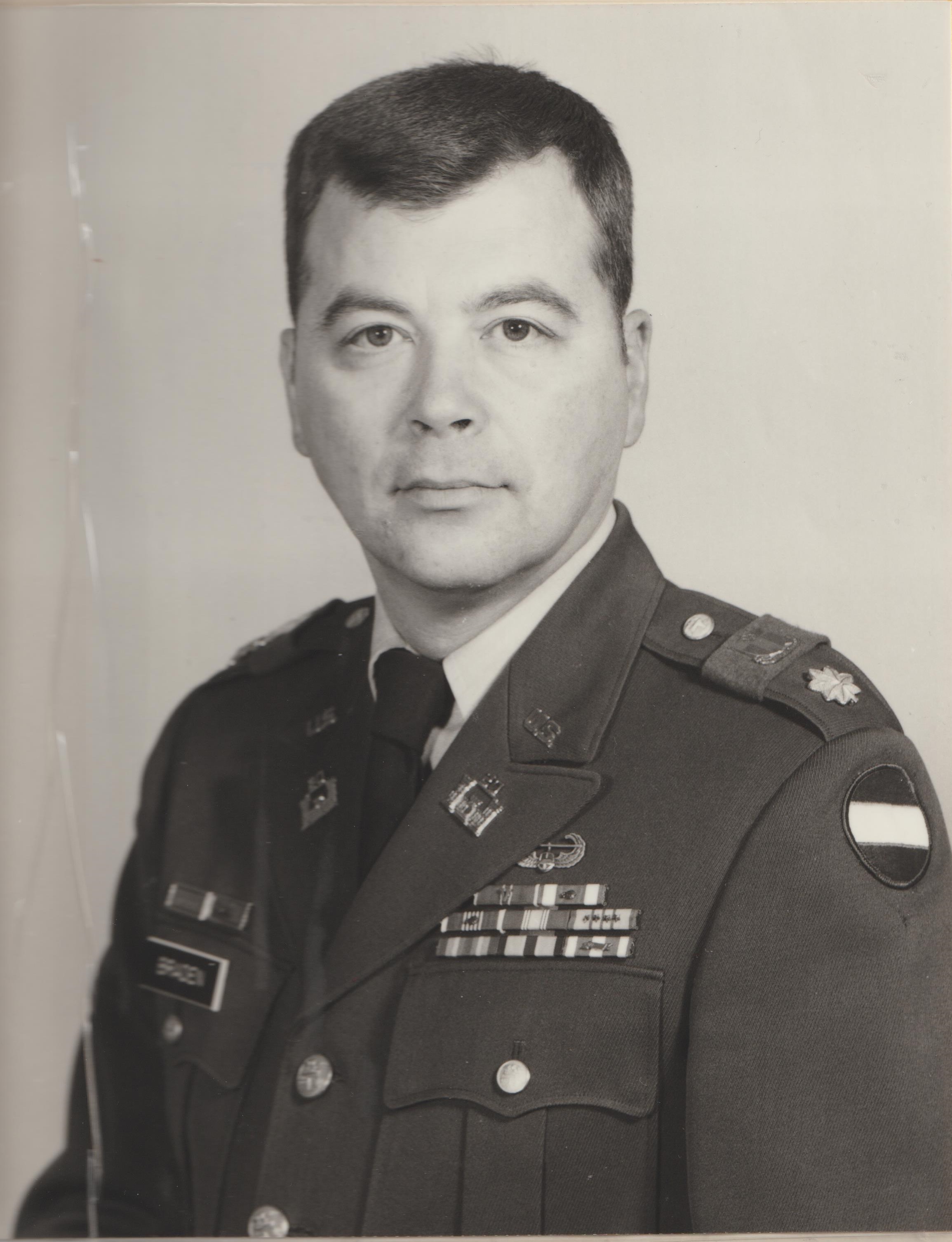
Click the image Lt Col Braden to view his extensive memoirs of the period.
In 1985 the 20th Engineers deployed some of its elements to Honduras during the period of Sandinista expansion in Central America. During the deployment, following an incident involving a fuel pump fire, three soldiers of Company D, 20th Engineers were awarded Joint Service Commendation Medals by the Chairman of the Joint Chiefs of Staff for heroic actions.
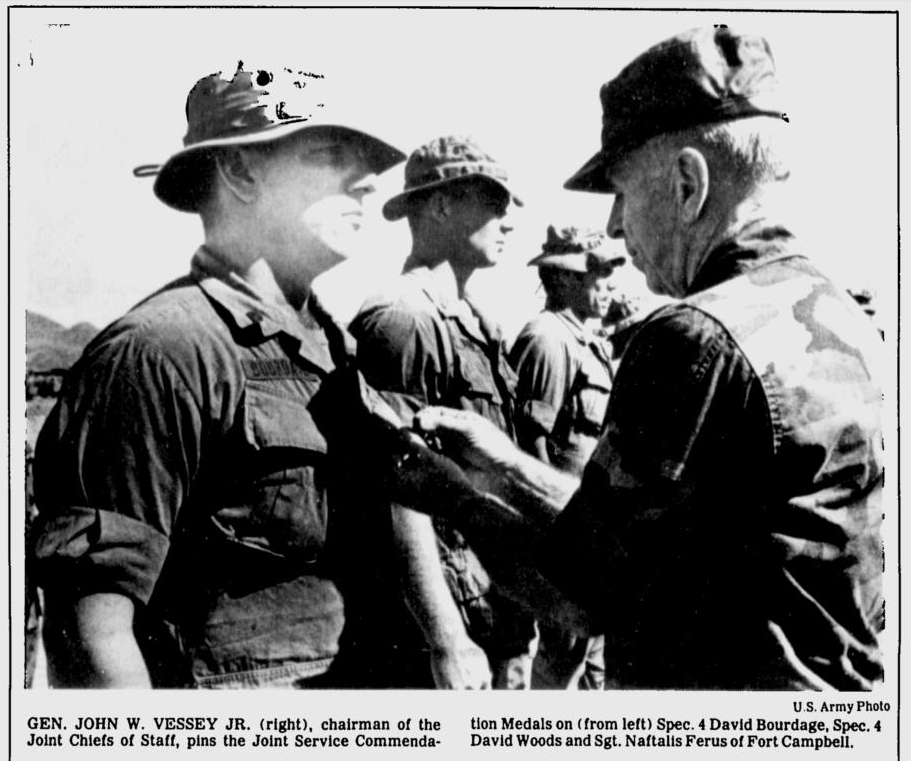
On 1 March 1987 the 41st Engineer Company (Medium Girder Bridge) was activated and attached to the 20th Engineers. Soldiers of the 20th Engineers had many opportunities to help construct this light-weight and rapidly deployable modular bridge system, an update to the venerable Bailey Bridge.
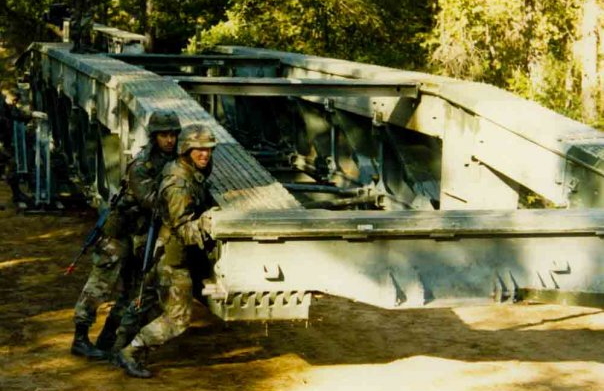 [1]
[1]
In the late 80s the 20th Engineers took advantage of many opportunities to train, to include sending soldiers to Sapper Leader Course at the U.S. Army Engineer School, Fort Leonard Wood, Missouri. The photo shows the cadre of Company B, 20th Engineers in 1989 at Sapper Leader Course.
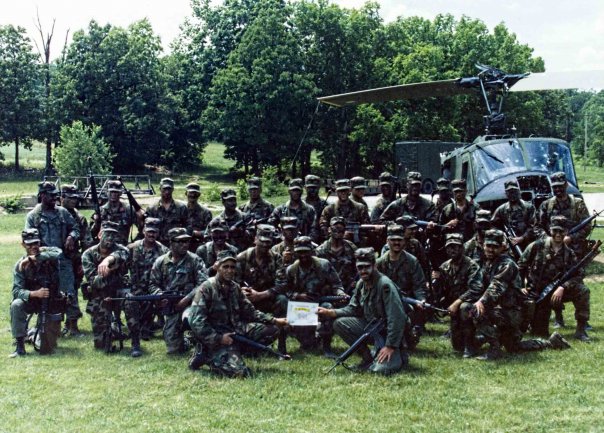 [1]
[1]
In 1987 a task force of soldiers based on Company C, 20th Engineer Battalion deployed to the nation of Belize, Central America, to repair a major bridge that had been washed away in a flood. The bridge crossed the Mullins River near the town of Dangriga.
On 15 January 1990, Company B of the 20th Engineers began 'Screaming Beast 90,' to deploy to Belize to repair the bridge that had washed out yet again.
This exercise required the deployment of 112 pieces of equipment from Fort
Campbell via barge down the Tennessee-Tombigbee waterway, and into the Gulf of Mexico. This was the first major military deployment using the "Tenn-Tom." Soldiers loaded the unit's equipment on one ocean-going barge located
at lock "C" on the Cumberland River. On 18 January 1990, the Compass
Freedom with tow departed down the Cumberland River to the Tennessee River
and onto the Tennessee-Tombigbee Waterway.
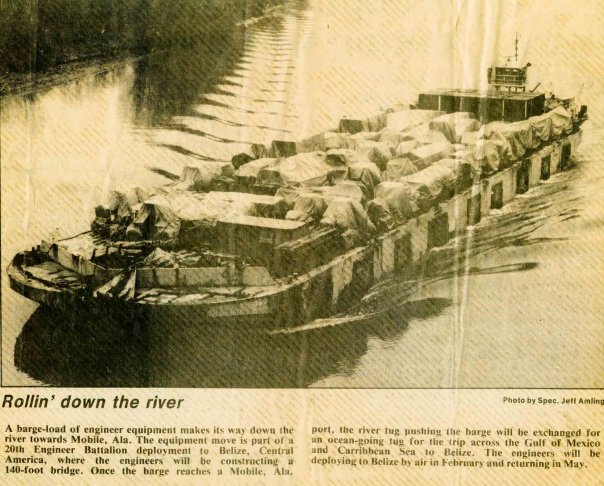 [1]
[1]
The tow arrived at the Port of Mobile, Alabama, on 21 January 1990. At the port, the ocean-going towboat, Betty G. relieved the river towboat. On 23 January, the tow left the Port of Mobile, Alabama for the transit across the Gulf of Mexico, about 1,400 nautical miles. The tow arrived at the Belize port on 30 January, 1990, after completing a 2,000 mile journey. Off-loading of equipment was complete by 1 February, 1990. The rest of the company linked up with the equipment in mid-February and set up their base camp.
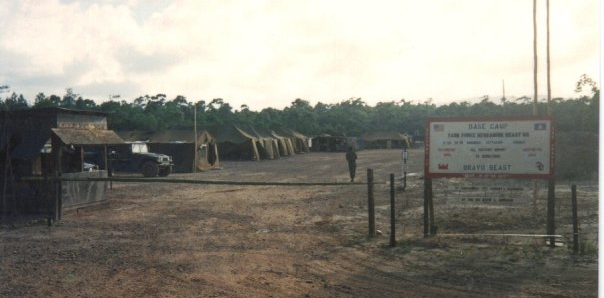 [1]
[1]
Following the Iraqi invasion of Kuwait on 2 August 1990, the 20th Engineers was alerted for deployment to Saudi Arabia. Click the streamer below to go to Operations Desert Shield and Desert Storm in Saudi Arabia and Iraq.
The 20th Engineers returned to Fort Campbell from Saudi Arabia in April 1991. The battalion barely had time to reorganize and refit before it was ordered to reorganize and move to Fort Hood, Texas, as part of the 1st Cavalry Division. Click the patch below to go to the next era of the 20th Engineers.
[1] Photos donated by David Schuhart